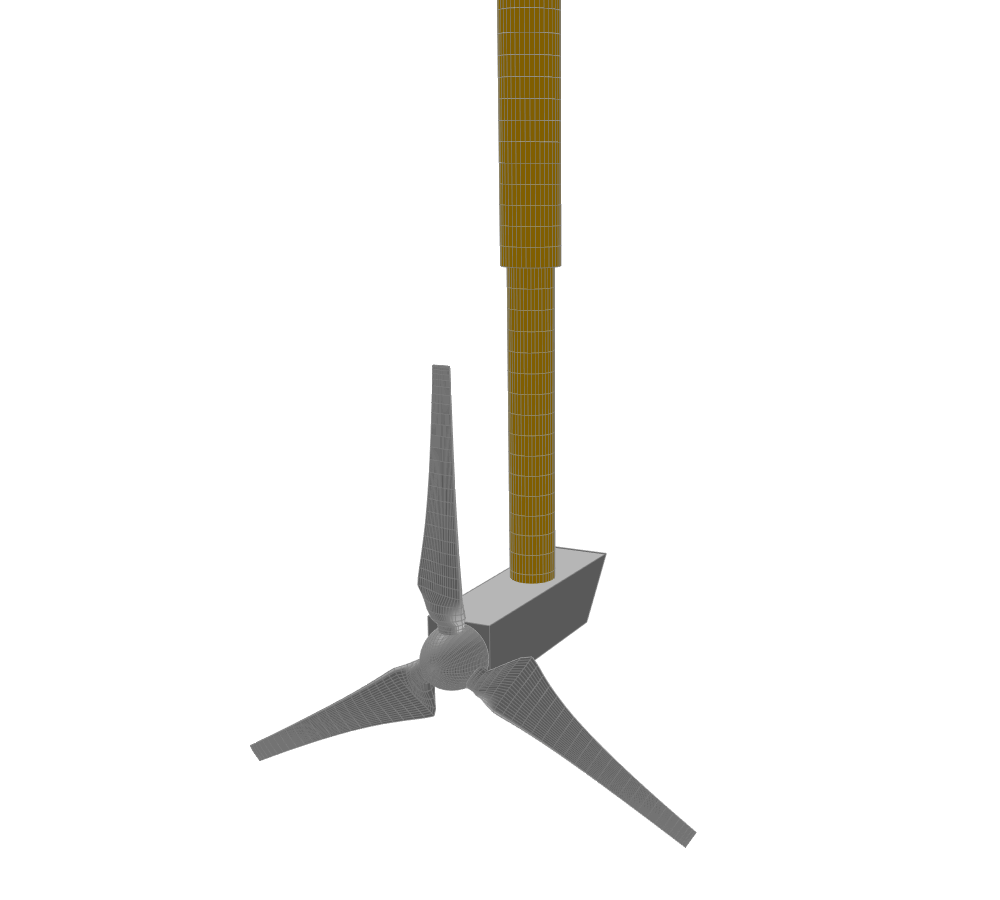Marine Hydrokinetic Turbines

Fig. 92 A marine hydrokinetic turbine designed in QBlade.
QBlade also provides the capability to model Marine Hydrokinetic (MHK) Turbines that are operating in water instead of air. When changing from air to water factors such as buoyancy, added mass, and inertia forces become increasingly important. Properly and consistently modeling these effects requires following a specific set of steps which are presented in the sections below.
Simulation Settings for MHK Turbines
MHK turbines are treated as if the were onshore turbines within the modeling framework. This involves substituting the density and viscosity values of air with those corresponding to water to ensure accurate physical properties throughout the model.
In the simulation settings, Turbine Environment set the Installation to Onshore.
Change the Air Density value to the respective value for water.
Change the Kinematic Viscosity Air value to the value for water.
Blade and Tower Model Settings for MHK Turbines
To assign Added Mass and Dynamic Pressure coefficients to the Blade, Strut and Tower Structural Data Tables, specific keywords can simply be added to the structural data table files associated with these components. Additionally, it’s possible to activate Buoyancy for these components using a dedicated keyword. Below are the relevant keywords explained:
The keyword ADDEDMASSCOEFF is employed to assign an added mass coefficient to the blade. This coefficient becomes valuable when modeling marine hydrokinetic turbines (MHK), contributing to the calculation of hydrodynamic inertia force and added-mass force in a Morison-style approach.
For added mass calculations, the blade sections are approximated as flat plates, while the tower and torquetube are assumed to have cylindrical shapes.
1.2 ADDMASSCOEFF
The keyword DYNPRESSURECOEFF is used to assign a dynamic pressure coefficient to the blade. This coefficient plays a role in modeling marine hydrokinetic turbines (MHK) and contributes to the Morison-style hydrodynamic inertia force calculation.
1.2 DYNPRESSURECOEFF
The keyword ISBUOYANCY activates buoyancy calculations for the structure to which it is applied. This accounts for the buoyancy force acting on the cross-sectional area of a blade or tower section.
true ISBUOYANCY
Substructure Model Settings for MHK Turbines
In the Substructure Design section, Morison Coefficients and Buoyancy can be assigned to various components of the substructure, following the usual procedure (see Morison Equation-Related Parameters). In this context the whole substructure (and turbine) is considered to be submerged in water. During the simulation of an onshore installed turbine, these coefficients will be used in conjunction with the Air Density value that was previously replaced with the value for water (see Simulation Settings for MHK Turbines).